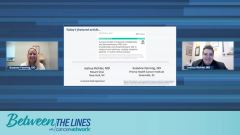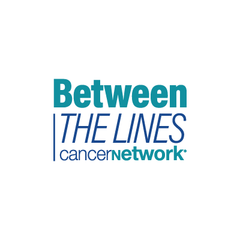
Future Directions in the Treatment of Multiple Myeloma
Drs Richter and Fanning discuss next steps and future directions in the management of patients with relapsed/refractory multiple myeloma.
Episodes in this series

Suzanne Fanning, DO: In terms of next steps where we go from here, 1 of the important things this trial points out is extramedullary disease. What’s a good way to better treat this patient population? Should we consider these patients like those who have plasma cell leukemias? Should we use a more aggressive approach in this patient population? Enrolling in a clinical trial with these patients is going to be challenging because thankfully for patients with myeloma overall, the numbers are small, but any guidance we can get with regard to that population would be great.
Joshua Richter, MD: Absolutely. For the ones that are hard to treat, the other thing we’re starting to do but not in the way I’d like to see it, is this triplet vs doublet trial this has been the standard myeloma study across the last decade: 2 drugs vs 3 drugs, and 3 drugs always wins. What we’ve seen in the up-front setting is 2 trials looking at quads vs triplet with Alcyone: D-VMP [daratumumab, bortezomib, melphalan, prednisone] vs VMP [bortezomib, melphalan, prednisone], and daratumumab–VTd [bortezomib, thalidomide, dexamethasone] vs VTd [bortezomib, thalidomide, dexamethasone], which is CASSIOPEIA. Those 2 had approval in the United States and from the EMA [European Medicines Agency]. The GRIFFIN study looking at daratumumab–RVd [lenalidomide, bortezomib, dexamethasone] vs RVd [lenalidomide, bortezomib, dexamethasone] shows extremely encouraging data. The question is, are we going to see a daratumumab–IRd [ixazomib, lenalidomide, dexamethasone] vs daratumumab–Rd [lenalidomide, dexamethasone] study looking at quad vs triplet in the relapse? The data are leaning toward quads up front, maybe not for everyone but for some. In clinical practice, every now and again, we have to give a quad because someone has such horrible disease. But I’d love to see the quad-vs-triplet version of this study to see how that would pan out in early relapses.
Suzanne Fanning, DO: To be commercially unbiased, I’ll coin the phrase we could have I [ixazomib] squared Rd [lenalidomide, dexamethasone] where we have isatuximab as the monoclonal antibody partner. That information is on its way. For a practicing myeloma doctor, the hardest question is sequencing. It’s going to take a multitude of trials over time to know the best sequencing, but that remains the most challenging—looking at the patient in front of you, looking at their individual biology of disease and their comorbidities, and trying to make the best treatment decisions for them. We don’t have any perfect answer, but with my patient population, I always say, “We’re on A. These are my ideas for B.” When they get to B, I say, “These are my ideas for C.” I’m always trying to think of what I’m going to use next so that I’m not shortening or inhibiting their response to any line of therapy.
Joshua Richter, MD: Thank you so much for tuning in. I hope our discussion has been helpful in terms of managing patients with relapsed/refractory multiple myeloma. On behalf of Dr Fanning and me, we wish you a good day.
Transcript edited for clarity.
Newsletter
Stay up to date on recent advances in the multidisciplinary approach to cancer.













































































